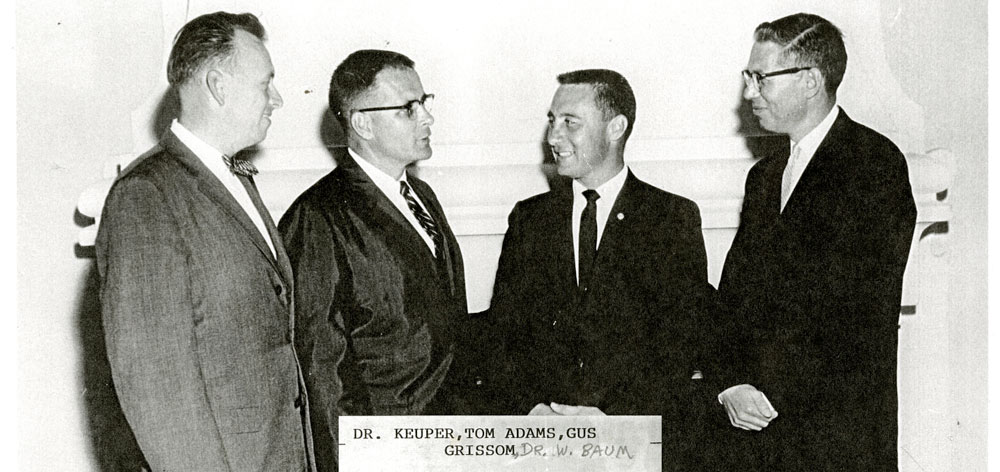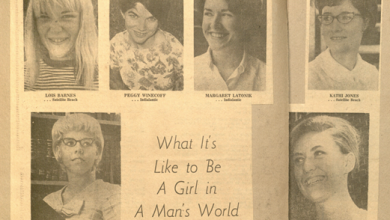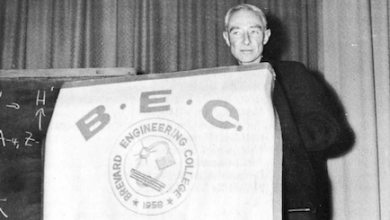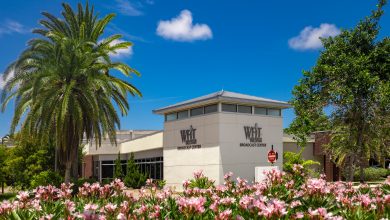The Secret History of How Florida Tech Got Its Name
Dateline: Florida Tech 1966

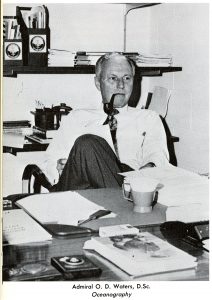 On June 15, 1966. Rear Admiral Odale “Muddy” Waters (1910-1986), Oceanographer of the United States Navy and Commander of the Naval Oceanographic Office, addressed Brevard Engineering College’s (BEC) fifth graduating class. Waters, a 1932 Annapolis graduate, former Rhodes Scholar, and internationally renowned oceanographer told the graduates that at first he was both “surprised and interested to hear that BEC had inaugurated a program of graduate studies in oceanography.” BEC, the Admiral explained, was a critical component in Florida’s drive to win the Department of Commerce’s planned ocean research center. It was not enough to have a good port. “You must,” Water explained, “have available a ready source of technically trained people.” Waters was impressed with what he had seen. “The college,” Waters declared, “shows evidence of becoming the MIT of Florida.”
On June 15, 1966. Rear Admiral Odale “Muddy” Waters (1910-1986), Oceanographer of the United States Navy and Commander of the Naval Oceanographic Office, addressed Brevard Engineering College’s (BEC) fifth graduating class. Waters, a 1932 Annapolis graduate, former Rhodes Scholar, and internationally renowned oceanographer told the graduates that at first he was both “surprised and interested to hear that BEC had inaugurated a program of graduate studies in oceanography.” BEC, the Admiral explained, was a critical component in Florida’s drive to win the Department of Commerce’s planned ocean research center. It was not enough to have a good port. “You must,” Water explained, “have available a ready source of technically trained people.” Waters was impressed with what he had seen. “The college,” Waters declared, “shows evidence of becoming the MIT of Florida.”
The audience understood the significance of the admiral’s words. Countdown College was being compared with one of the nation’s most prestigious universities. In eight years the school had grown beyond its original mission. Six days before the graduation exercises, college officials announced that the Florida Department of State had issued the school a charter bearing the name “Florida Institute of Technology.” “We have long recognized,” Keuper explained, “that the name Brevard Engineering College is very provincial and has hindered our growth and retarded our national image… nobody, outside of Florida has ever heard of Brevard.”
 The backstory on how “Countdown College” (BEC) became Florida Institute of Technology is worth telling. In 1962, Jerry Keuper was trying to win recognition for the school. He hit on the idea of awarding honorary degrees to a rising political star named Tom Adams and one of the Mercury 7 astronauts, Virgil “Gus” Grissom. In June 1962, Adams and Grissom received their awards. Drinks and conversation ensued and Keuper told Adams he wanted to lift the college’s prestige. Changing the school’s name was a step in that direction. Adams, Florida’s Secretary of State, had a solution. He advised Keuper to draw up an amendment to the college’s institutional charter and send it to him. At present, there was a store-front school in Tampa that had the rights to the name Florida Institute of Technology. It was Adam’s opinion that sooner or later the Tampa group would fail to pay their annual corporate fee. Adams promised he would keep Keuper’s application in his desk drawer.
The backstory on how “Countdown College” (BEC) became Florida Institute of Technology is worth telling. In 1962, Jerry Keuper was trying to win recognition for the school. He hit on the idea of awarding honorary degrees to a rising political star named Tom Adams and one of the Mercury 7 astronauts, Virgil “Gus” Grissom. In June 1962, Adams and Grissom received their awards. Drinks and conversation ensued and Keuper told Adams he wanted to lift the college’s prestige. Changing the school’s name was a step in that direction. Adams, Florida’s Secretary of State, had a solution. He advised Keuper to draw up an amendment to the college’s institutional charter and send it to him. At present, there was a store-front school in Tampa that had the rights to the name Florida Institute of Technology. It was Adam’s opinion that sooner or later the Tampa group would fail to pay their annual corporate fee. Adams promised he would keep Keuper’s application in his desk drawer.
Tom Adams kept his word. Three years later in December 1965, Adams joined BEC’s Board of Trustees. “I am proud,” Adams declared, “to have this opportunity to add my shoulder to the wheel to help build Brevard Engineering College.” In June 1966 Adams phoned Keuper. The Tampa people had neglected to pay their institutional dues. Keuper should expect an official letter from the Office of Florida’s Secretary of State authorizing BEC’s adoption of the name Florida Institute of Technology by BEC.
On August 1, 1966, BEC’s Board of Trustees met. Trustee Tom Adams presented a motion to his fellow board members calling for approval of the name change. Two days later Secretary of State Adams announced that his office had “routinely” approved an amendment to the BEC’s educational institution’s charter authorizing the name change. There was an immediate response in Melbourne. Keuper received a phone call from the frantic manager of the school’s bookstore. “He wanted to know,” Keuper chortled, “what he should do with all the Brevard Engineering College T-shirts he had in stock. I told him to double the price and call them collector’s items.”
Keuper and Adams action triggered a state-wide controversy. Boosters of the proposed public university in Orlando protested the name change. State supported Florida Technological University (FTU, later the University of Central Florida) was scheduled to open in 1968. FTU’s backers argued that the BEC’s name change constituted an “infringement”. State Comptroller Bud Dickinson offered his “horseback” opinion “ BEC’s new name constituted a “basis for confusion” between the two institutions. State Attorney General Earl Faircloth ordered his staff to investigate the “technical aspects of the problem.” “In my opinion,” Faircloth blustered, “no private non-profit institution has the right to infringe — or possibly infringe — on a name adopted by the state for a state institution.” Faircloth promised to present his recommendations to the State University System’s Board of Regents at their September meeting
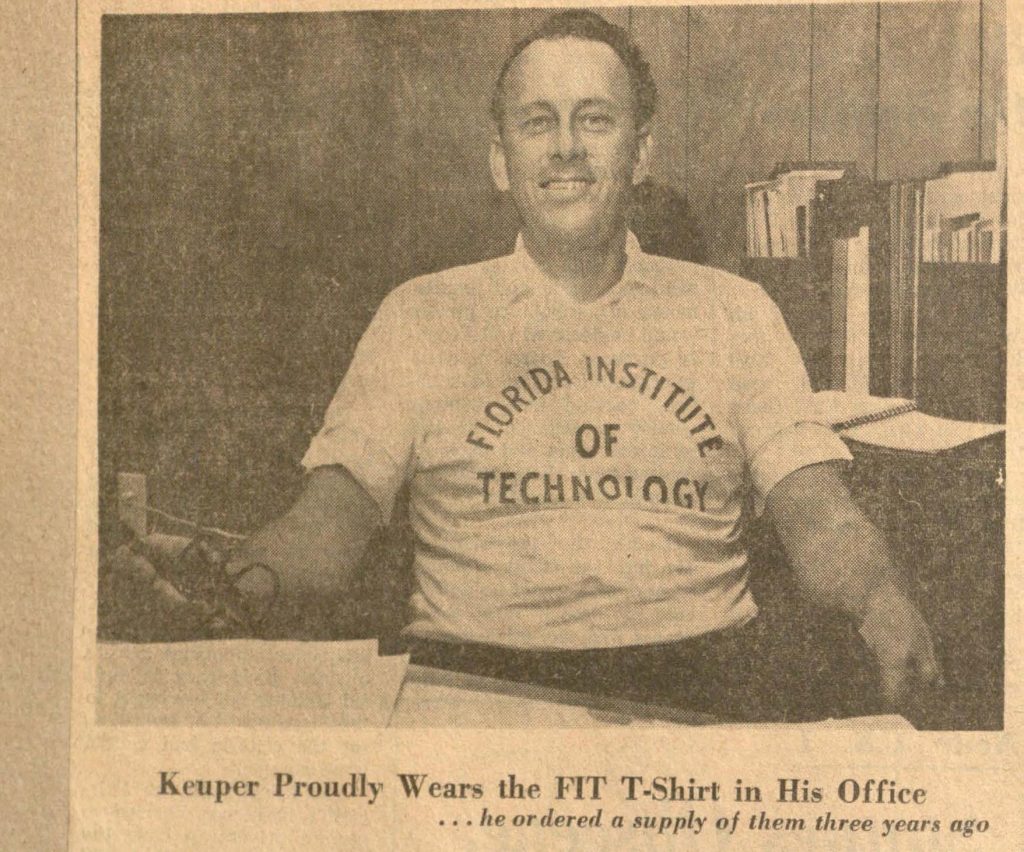 Keuper issued a blistering rebuttal. Faircloth’s allegation that BEC had committed an “infringement on state’s rights” was “absurd.” “The state,” Keuper declared, “has no right to get huffy about FIT’s name.” We thought of that name three years ago.” The Orlando school was “misnamed.” “The school over there,” Keuper explained, “has been established by the state legislature as an area university that will have more scope than just technological.”
Keuper issued a blistering rebuttal. Faircloth’s allegation that BEC had committed an “infringement on state’s rights” was “absurd.” “The state,” Keuper declared, “has no right to get huffy about FIT’s name.” We thought of that name three years ago.” The Orlando school was “misnamed.” “The school over there,” Keuper explained, “has been established by the state legislature as an area university that will have more scope than just technological.”
Faircloth’s displeasure with FIT did not stop the recently christened Florida Institute of Technology from seizing on an opportunity to put its new name to good use. In August, Joe Boyd, chairman of the Harris Corporation and FIT trustee, donated his 39 foot yacht to the fledgling oceanography program. The vessel was promptly re-christened “Miss FIT.” Jay Bain, a twenty-two year old graduate student in the program, declared that Boyd’s 39 foot vessel was “the dream of every oceanography student.”
Claude Kirk’s election in November 1966 as the first Republican Governor of Florida since Reconstruction ended the controversy. Kirk, who never minced words, let it be known that he considered Attorney General Earl Faircloth “one of the great dunces of the world.” Kirk’s opinion of State Comptroller Dickinson was slightly better. Dickinson was “a nice guy who survived by going along.” Kirk made it clear that he was not going to allow a cabinet made up of “throwbacks to the Neanderthal age” direct his administration.
Tom Adams was the exception. Kirk disliked Adams but he respected his political savvy. “Damn you to hell,” Adams recalled Kirk shouting on one occasion as he entered the governor’s office, “at least I know where you stand. That fellow who just left was in here for fifteen minutes. I discovered my leg is all wet because he’s been pissing on it.” With that expression of grudging respect, Kirk declared he agreed with Adams. The fledgling missile college was entitled to the name Florida Institute of Technology. Faircloth and Dickinson’s opposition vanished. Weeks later Keuper received a letter from the state’s attorney general congratulating the school on its new name.
1966 was a year of tremendous change for the missile college. New programs were introduced, student enrollment sky-rocketed, full-time faculty increased, and the campus was transformed as workers started construction on a new facilities. The decision to adopt the name Florida Institute of Technology for the university marked the beginning of a new stage in the university’s development. “We started in 1958,” Keuper observed looking back at the school’s first eight years, “with a handful of technicians who wanted to learn and a handful of learned scientists who wanted to teach. We put the two together, first in borrowed classrooms, finally in our own buildings. People like us, without money, normally don’t go out and start a university.”
Note: After his retirement from the Navy in 1970, Admiral Odale “Muddy” Waters joined Florida Tech’s faculty.

